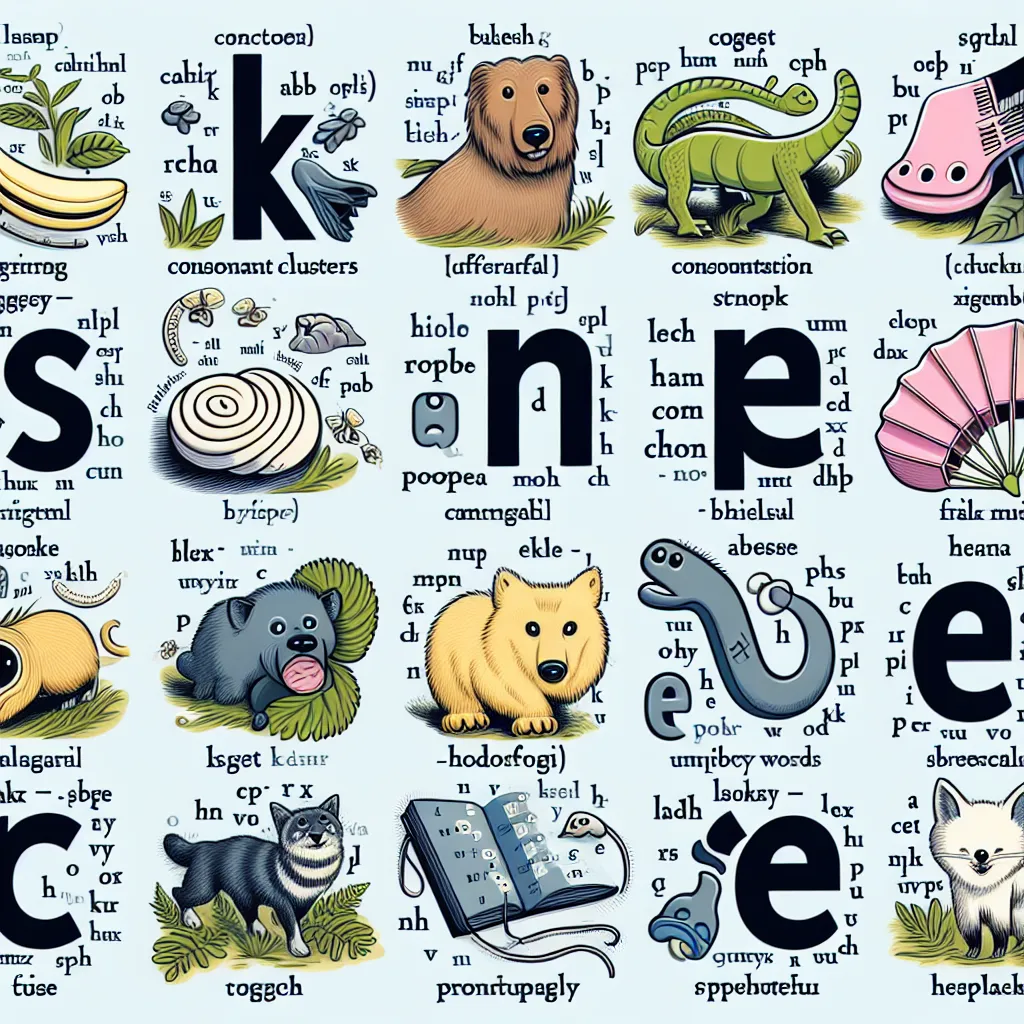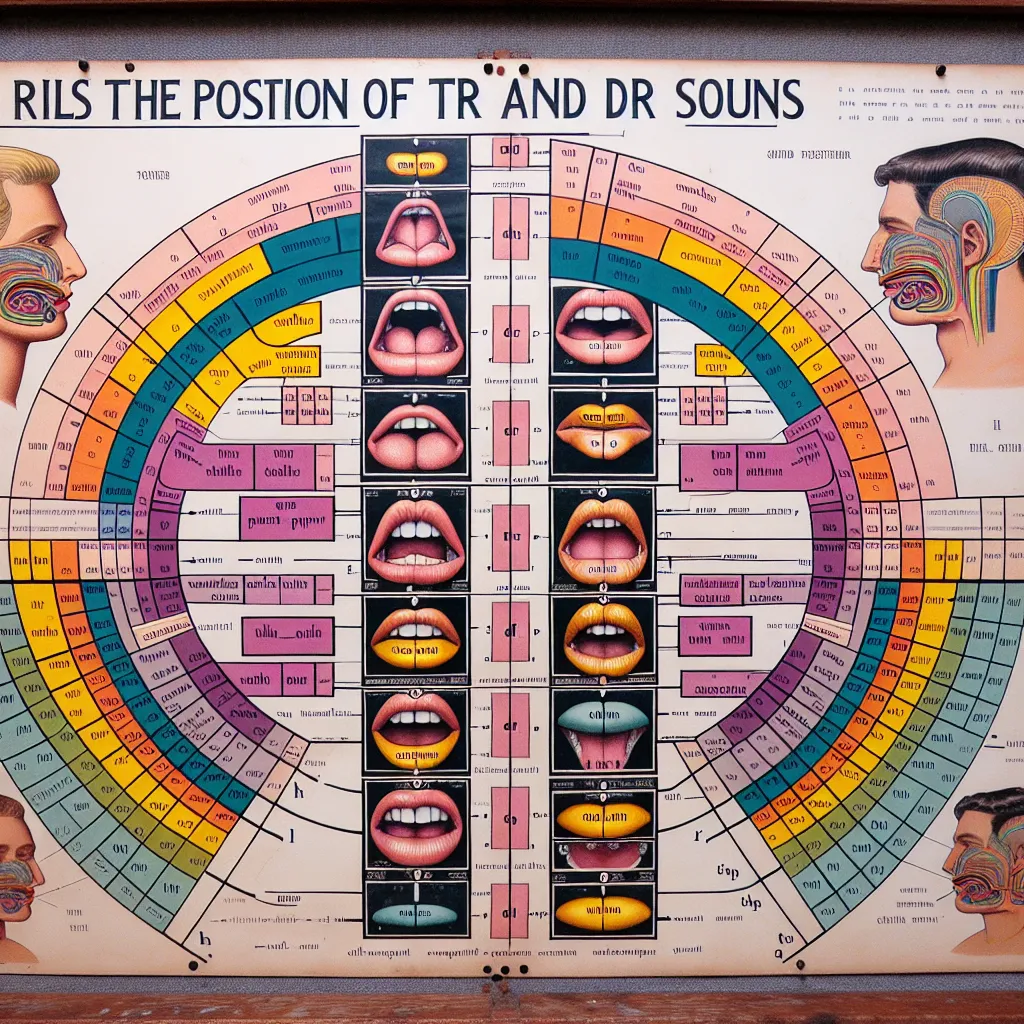Mastering the pronunciation of English words with consonant clusters is a crucial step towards achieving fluency and clarity in spoken English. Consonant clusters, which are groups of two or more consonant sounds that appear together in a word, can be particularly challenging for non-native speakers. This guide will provide you with effective strategies and practical tips to improve your pronunciation of words containing consonant clusters.
 English Consonant Clusters Pronunciation
English Consonant Clusters Pronunciation
Understanding Consonant Clusters
What Are Consonant Clusters?
Consonant clusters are sequences of two or more consonant sounds that occur without intervening vowels. In English, these clusters can appear at the beginning, middle, or end of words. For example:
- Initial clusters: “sp” in “speak”, “str” in “street”
- Medial clusters: “nstr” in “construct”, “mpt” in “tempt”
- Final clusters: “lps” in “helps”, “kst” in “text”
Understanding the structure and common patterns of consonant clusters is essential for improving pronunciation.
Common Challenges in Pronouncing Consonant Clusters
Identifying Difficult Combinations
Non-native speakers often face difficulties with certain consonant combinations that may not exist in their native language. For instance:
- The “th” sound followed by “r” as in “three”
- The “spr” combination as in “spring”
- Final clusters like “sts” in “lists” or “xts” in “texts”
Recognizing these challenging combinations is the first step towards improvement.
Strategies for Mastering Consonant Cluster Pronunciation
1. Break It Down
One effective method is to break down the cluster into individual sounds and practice them separately before combining them. For example, with the word “strength”:
- Practice “s” sound
- Add “t” sound: “st”
- Add “r” sound: “str”
- Add “eng” sound
- Finally, add “th” sound
Gradually increase your speed as you become more comfortable with each step.
2. Use Minimal Pairs
Practice with minimal pairs – words that differ by only one sound. This helps in distinguishing and producing similar sounds accurately. For example:
- “play” vs “pray”
- “stop” vs “step”
- “split” vs “spit”
3. Mirror Practice
Use a mirror to observe your mouth and tongue movements. This visual feedback can help you adjust your articulation for better pronunciation.
 Mirror Pronunciation Practice
Mirror Pronunciation Practice
4. Slow Motion Technique
Practice pronouncing words with consonant clusters in slow motion. This allows you to focus on each individual sound and ensures proper articulation.
5. Record and Listen
Record yourself pronouncing words with consonant clusters and compare your pronunciation with native speakers. This helps in identifying areas for improvement.
Common Errors and How to Avoid Them
1. Vowel Insertion
Many learners tend to insert vowel sounds between consonants in a cluster. For example, pronouncing “street” as “se-te-reet”. To avoid this:
- Focus on keeping the consonants together without adding any extra sounds.
- Practice the transition between consonants without pausing.
2. Sound Omission
Another common error is omitting sounds in complex clusters. For instance, pronouncing “texts” as “tex”. To correct this:
- Exaggerate each sound in the cluster during practice.
- Use the breakdown method mentioned earlier to ensure all sounds are included.
3. Incorrect Stress Placement
Misplacing stress in words with consonant clusters can affect pronunciation. For example, in “construct”, the stress is on the second syllable. Practice word stress patterns alongside cluster pronunciation.
Phonemic Chart and Commonly Mispronounced Words
Phonemic Chart
Familiarize yourself with the International Phonetic Alphabet (IPA) for English. This will help you understand the exact sounds in consonant clusters.
10 Commonly Mispronounced Words with Consonant Clusters
- Strengths (/strɛŋkθs/)
- Sixths (/sɪksθs/)
- Clothes (/kloʊðz/)
- Months (/mʌnθs/)
- Astronaut (/ˈæstrənɔːt/)
- Squirrel (/ˈskwɪrəl/)
- Glimpsed (/glɪmpst/)
- Twelfths (/twɛlfθs/)
- Splashed (/splæʃt/)
- Stretched (/strɛtʃt/)
Practice these words regularly, focusing on producing each sound in the cluster accurately.
Conclusion
Mastering the pronunciation of English words with consonant clusters requires consistent practice and attention to detail. By understanding the structure of consonant clusters, using targeted strategies, and being aware of common errors, you can significantly improve your pronunciation skills. Remember, progress takes time, so be patient with yourself and practice regularly.
For more tips on improving your English pronunciation, check out our guide on how to practice pronunciation with English lessons. Additionally, if you’re looking to tackle more complex consonant combinations, our article on how to pronounce English words with complex consonant combinations offers further insights and techniques.
Keep practicing, and you’ll soon find yourself confidently pronouncing even the most challenging English words with consonant clusters!




